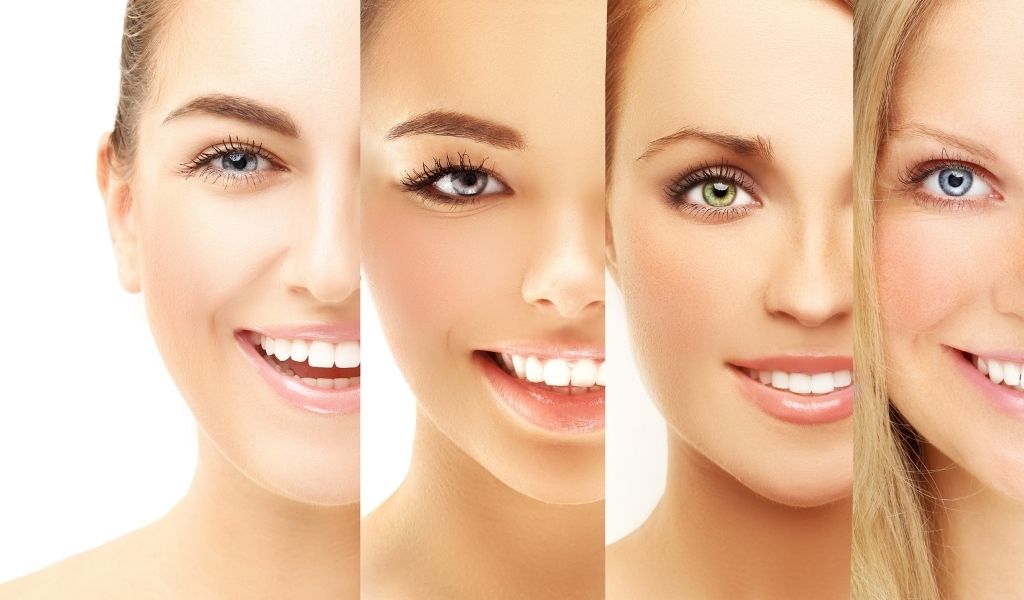25 Beauty Tips for Your Skin Type
Just as we all have a body type or hair type, we also have a skin type. Recognizing what skin type you are can help you love and appreciate the skin you’re in and how to care for it.
Although factors like genetics, diet, stress, hormones, and medications can play a role in what skin type you have, sometimes the wrong beauty routine can make certain skin conditions, like oiliness, breakouts, or dryness, worse.
In this post, we’ll help you identify your type of skin based on certain characteristics, or traits (i.e. dryness, oiliness, tone, texture, etc.), your skin displays followed by our beauty tips and recommendations on how to properly care for your specific skin type to keep it healthy and looking its best.
In general, skin is classified into five basic skin types: dry skin, oily skin, combination skin, normal skin, and sensitive skin.
Does your skin feel as dry as the Sahara Desert? Then you may be a dry skin type. Dry skin can be attributed to several distinct factors including climate and genetics.
Dry skin types typically have invisible pores and often experience wrinkling, flaking, scaly patches, and dullness from dead skin build up.
Many dry skin types think that the key to caring for their skin is to simply add more moisturizer. However, studies have shown that the water content of dry skin types and oily skin types are equivalent (go figure)! In fact, skin care experts say that adding water to dry skin types can make this skin type’s symptoms worse.
If the above beauty tips don’t help alleviate your dryness, this could be an indication that your dry skin type could be caused by a more serious underlying condition. If this is the case, make sure to talk to a dermatologist or doctor to rule out the following conditions:
Does your skin consistently look and feel like a greasy oil slick? The shine you see could be an indicator that you’re an oily skin type. Oily skin types have shiny skin, typically in the t-zone, and are characterized by large pores and frequent acne or breakouts.
When you’re younger, oily skin can sometimes be considered a curse because of the greasiness and acne. However, as you begin to age, oily skin becomes a blessing in disguise! This is because oily skin types tend to age better than dry skin types by forming less lines, wrinkles, and other signs of aging.
If the above beauty tips do not alleviate breakouts on your oily skin type, we suggest that you seek the advice of a professional (read below regarding the acne scale to gauge the severity of your breakouts).
Is your skin, sometimes, as confused as you are? No worries! It’s said that almost 70% of people have a confused or combination skin type that is characterized by a slightly oily t-zone, dry cheeks, and dry skin patches. Combination skin types have large pores on certain areas like their cheeks or forehead as opposed to all over the face, like oily skin types.
Since combination skin requires taking care of two different skin types at the same time, it’s important to find the right skin regimen to cater to both needs.
If you’re lucky enough to have a normal skin type then, congratulations! Normal skin types are neither too dry or too oily, tend to have small/invisible pores, rarely have breakouts, and have little flakiness, lines, or wrinkles.
It’s important to point out that “normal skin type” does not mean “perfect skin type” (even though most of us would gladly give up our favorite designer handbag to have it). Just like other skin types, normal skin types require some tender loving care to ensure that their skin continues to look healthy and radiant.
Are you easily irritated? Then you may be a sensitive skin type. Sensitive skin is characterized by fine pores and thin skin. This skin type tends to be sensitive to sun, skin care, and some cosmetics. Typically, sensitive skin will react to sensitivity with blotchiness, redness, irritation, and itchiness.
Because of its unpredictable nature, sensitive skin types must be extra careful when trying to find the right skin care regimen.
Beyond these basic skin types, there are other ways to classify skin. Skin care professionals, like dermatologists, use a variety of classification systems and scales when administering skin care treatments including the Fitzpatrick Scale and a system of grading the severity of acne.
The Fitzpatrick Scale was developed as a universal skin classification system in 1975 by Thomas B. Fitzpatrick, a Harvard dermatologist. The scale is designed to estimate the response of diverse types of skin to ultraviolet (UV) light. It turns out acne and sun exposure are correlated and learning what skin type you have can help you avoid breakouts and burns.
The Fitzpatrick Scale is commonly used to research the causes and effects of human skin pigmentation in a variety of environmental conditions. A dermatologist may use this scale to determine how a patient may react to certain facial treatments.
In general, there are seven main types of skin types in the Fitzpatrick Scale:
If you have acne, dermatologists will often use an acne scale to gauge the severity of your breakouts. This, in turn, helps them determine the appropriate treatment for your skin type.
In general, there are six main types of acne in the acne scale:
Having the right knowledge about skin types and how to figure out your skin type is key in developing healthy habits and a beauty routine that works for you. We hope that the above information and beauty tips will get you on the road to achieving the best results for your unique skin type!
References:
The post 25 Beauty Tips for Your Skin Type first appeared on MO Marketplace and is written by MO Team




